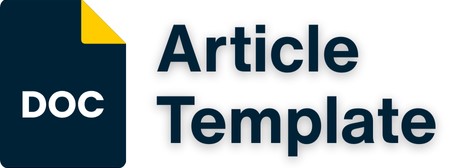THE COMPETITIVE STRATEGIES OF A MICROFINANCE INSTITUTION AMIDST THE COVID-19 PANDEMIC: BASIS FOR REVIEW OF BUSINESS CONTINUITY PLAN
Keywords:
Competitive Strategies, Microfinance Institutions, Covid-19 Pandemic, Business Continuity PlanAbstract
The current pandemic reduces microfinance institutions'' financial efficiency. Still, it increases its social efficiency, indicating that, while the economic slowdown lowers Microfinance financial performance, the role of creating a social impact is seemingly prioritized during COVID-19. This study aims to assess a Microfinance Institution's business continuity amid the COVID19 pandemic. This study used a quantitative research design. Purposive sampling was used and the respondents were the twelve (12) area managers of the selected Microfinance Institution. Data collection was done with a 4-point Likert scale questionnaire facilitated online. Percentage, frequency distribution, and weighted mean were used to analyze the data. Among the twelve areas, all are still operational. The majority of the areas experienced cash flow shortages, and a decrease in revenue and loan applications while their workforce was not affected by the COVID19 pandemic. The Microfinance institution's portfolio Quality and profitability were poor while its financial management and efficiency and productivity were good. It is recommended for the MFI to keep on innovating, go digital and continue to strengthen the use of their procedures, and embrace additional best practices to make changes if necessary.
References
Aranas, L. L., Khanam, R., Rahman, M. M., & Nghiem, S. (2020). Combining microfinance and health in reducing poverty-driven healthcare costs: Evidence from the philippines. Frontiers in Public Health, 8, 583455. https://doi.org/10.3389/fpubh.2020.583455
ASKI Group of Companies, Inc. (n.d.). Retrieved October 12, 2020, from https://www.aski.com.ph/AboutUs.aspx
Beck T. (2020) Finance in the times of coronavirus. In: Baldwin R., di Mauro B.W., editors. Economics in the time of COVID-19, a VoxEU.org eBook. CEPR Press; 2020 <http://acdc2007.free.fr/ceprcorona.pdf>.
Beck, Thorsten (2020) : Fintech and financial inclusion: Opportunities and pitfalls, ADBI Working Paper Series, No. 1165, Asian Development Bank Institute (ADBI), Tokyo. Retrieved from: https://www.econstor.eu/bitstream/10419/238522/1/adbi-wp1165.pdf
Behera, D., Praveen, D., & Behera, M. R. (2020). Protecting Indian health workforce during the COVID-19 pandemic. Journal of Family Medicine and Primary Care, 9(9), 4541–4546. https://doi.org/10.4103/jfmpc.jfmpc_925_20
Bogan V.L. (2012). Capital structure and sustainability: An empirical study of microfinance institutions. The Review of Economics and Statistics. 2012;94(4):1045–1058.
Dąbrowska K. et al., (2020). Impact of COVID-19 Pandemic on the Microfinance Sector in Europe: Field Analysis and Policy Recommendations,MICRO FINANCE CENTRE (s7-10) <https://mfc.org.pl/wp-content/uploads/2020/10/Impact-of-COVID19-on-MF-sector.pdf>,
Four ways microfinance institutions are responding to covid-19. (n.d.). Retrieved August 20, 2021, from https://www.cgap.org/blog/four-ways-microfinance-institutions-are-responding-covid-19
internationalbanker. (2020, October 19). How covid-19 is affecting microfinance. International Banker. https://internationalbanker.com/finance/how-covid-19-is-affecting-microfinance/
Microfinance and covid-19: A framework for regulatory response. (n.d.). Retrieved January 26, 2021, from https://www.cgap.org/research/covid-19-briefing/microfinance-and-covid-19-framework-regulatory-response
Parmanand, S. (2021). Regulating motherhood through markets: Filipino women’s engagement with microcredit. Feminist Review, 129(1), 32–47. https://doi.org/10.1177/01417789211040506
Sangwan, S., Nayak, N. C., Sangwan, V., & Pradhan, A. K. (2021). Covid‐19 pandemic: Challenges and ways forward for the Indian microfinance institutions. Journal of Public Affairs, 21(4). https://doi.org/10.1002/pa.2667
Zamore, S., Beisland, L. A., & Mersland, R. (2019). Geographic diversification and credit risk in microfinance. Journal of Banking & Finance, 109, 105665. https://doi.org/10.1016/j.jbankfin.2019.105665
Zheng C., and Zhang J. (2020). The impact of COVID-19 on the efficiency of microfinance institutions. International Review of Economics & Finance. 2021 Jan; 71: 407–423. Published online 2020 Sep 28. <https://www.ncbi.nlm.nih.gov/pmc/articles/PMC7521446/
Downloads
Published
How to Cite
Conference Proceedings Volume
Section
License
ECOSIA is licensed under a Creative Commons Attribution- 4.0 International Public License (CC - BY).


